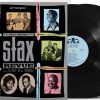On March 18th, 2020, I began working from home as Alberta and Canada moved rather rapidly into COVID-19 lockdowns. My wife’s last day working at her office was March 20th. Over the past 12 months, I have ventured into the downtown core of Calgary exactly three times; once to clear out my office at my old employer (I changed jobs at the end of May), once to buy a bottle of whisky (Alberta Distillers Cask Strength Rye), and once to drive my wife to her office to pick up some work supplies.
It’s been a tiring year to say the least. Alberta has been at varying levels of pandemic alert, and the severity of rules has waxed and waned around human contact, business closures and other safety measures. Somehow in that time I have managed to buy a lot of music, the vast majority on vinyl. I’m not the only one, it seems.

Discogs’ 2020 End-of-Year Report is a worthy read if you are curious about the state of the music business. The physical music side of the ledger shows some very interesting developments noting substantial increases from 2019, attributable largely I’m sure to music lovers being stuck at home with little to do but listen to music. The report notes “Growth in global physical sales through the Discogs Marketplace were up 35.78% to 8,845,534 orders over the prior year. In total, 16,290,197 pieces of physical music were sold around the world, bringing an overall 40.12% increase year-over-year.” Not surprisingly, vinyl was the most popular physical music format sold on the Discogs Marketplace in 2020, with a whopping 11,961,998 records sold. A 40.7% rate of increase that has also impacted the sales of new turntables. Affordable audiophile turntables have become one of the hottest categories in audio for the simple reason that more people are buying records, and a lot of them.

I went into the pandemic with a small collection of jazz records, mostly purchased locally or on Amazon during my first forays back into vinyl. Some of those purchases were, in retrospect, ill advised (more on that later). My “virtual crate digging” behaviour has changed considerably over the past 12 months as I’ve learned from research and experience.
My early vinyl buys were primarily duplicates of albums already in my CD collection, mostly high-profile releases from the more prestigious labels like Blue Note, Prestige and Verve. The last year has brought exploration of new artists, lesser-known releases, and smaller independent record labels. What follows are some of the buying and learning tactics I’ve taken, with pros and cons where relevant. If you’re looking to grow a collection, these should help you avoid common pitfalls.
Amazon
Early in the pandemic, Amazon was my vinyl source of choice. I could find almost anything I wanted, and I ordered copiously from their Marketplace and via Prime – who doesn’t like free shipping? A few weeks in though I hit a run of bad luck; in the space of a few weeks, seven out of nine orders arrived damaged with bent covers, seam splits or damaged vinyl. In one case I received a Marketplace order with a shipping label attached directly to the record’s cellophane wrapping, with no protective packaging whatsoever. Thankfully Amazon’s return policy covered all issues, and I was refunded promptly, but I soon grew wary of having to return stuff and moved on to other avenues.

European Public Domain Recordings
A few months into lockdown I learned about EU “Public Domain” recordings. Exploiting an EU copyright loophole, a number of new record labels sprang up in the first decade of the 2000s, releasing music from the 1940s and ‘50s with lapsed European copyright. Records of dubious quality were manufactured (the bulk from CD and even MP3 sources instead of analogue or high-resolution digital masters), often with bonus tracks and new cover art, and sold at very reasonable prices both in the EU and abroad.

Turns out I had a few dozen royalty-free releases in my collection, from labels like Waxtime, DOL, Jazz Wax Records, Doxy, PanAm and others. Not knowing their origins, I’d bought them mainly because they were cheap, and in some cases because other, official versions were not available. Some sounded pretty good, and others not, but to be honest in most cases I was pretty happy until I compared with official releases. I’ve since replaced almost all with official versions but will admit they’re a great way for a new jazz fan to hear some amazing music without going bankrupt.
Audiophile Reissues
Around the time I learned about and started avoiding public domain releases, I discovered the financial sinkhole of audiophile labels. Companies like Analogue Productions, Mobile Fidelity, Craft Recordings, Intervention Records and even Blue Note with their Tone Poet releases, create remasters from original tapes and press from these onto high quality, heavyweight vinyl, resulting in the most incredible sounding records. With high-quality sleeves and packaging, these officially sanctioned reissues demand high prices, but in my mind they’re worth the premium.

My first audiophile reissues were purchased online, directly from the manufacturer. If you’re in the United States, this is a great way to buy as shipping is often free over a certain threshold. Unfortunately, shipping to Canada is never free, but what really hurt were the ridiculous import duties (and even more so the “processing fees” charged by the shipping companies which effectively tripled the shipping costs). Feeling violated after several particularly painful customs bills arrived, I stopped ordering direct and switched to ordering through local record stores, which usually takes longer but results in significantly diminished angst and more money left in my bank account.
Discogs
I have used Discogs to catalogue my record collection since first getting back into vinyl but didn’t buy any records there until a few months into lockdown. I started getting frustrated that many of my favourite recordings were not available through my existing channels as they hadn’t been reissued locally in decades. Records like Blue Hour by Stanley Turrentine and the Three Sounds, Slow Drag by Donald Byrd, The Magnificent Thad Jones by Thad Jones, Little Johnny C by Johnny Coles and Heavy Soul by Ike Quebec were seemingly not available in Canada.

Then I discovered these records existed as Japanese and European (official) reissues, available somewhat reasonably (except in the case of rare records) via the Marketplace, and the floodgates opened. The Discogs grading and feedback system keeps sellers relatively honest (I’ve received a few sub-par records but received discounts or refunds), and multi-buys help keep shipping charges in check. This has been a veritable treasure trove for long-desired records, and for new discoveries bought on a whim as shipment “fillers.”

I haven’t purchased anything on Instagram, but it sure has been a rich source of recommendations and discoveries of new music (jazz and otherwise). Some of my favourites are @chadillac_music, @rarerecords613, @mistachen, drummer @feritodman, and @bojanchakra. There are countless others, and it’s proven to be a great resource.
Buying Local
If it’s not obvious already, the first rule when buying records is to buy local. You don’t have to worry about shipping damage, and wholesale and bulk discounts invariably make up for the shipping and customs pain of direct ordering. I’ve gotten to know the managers and staff of most of the record stores in Calgary, which has been a great way to learn about upcoming releases, rare reissues, and general music facts and trivia.
I place orders by email or via Instagram messaging when I’m not able to physically visit the stores, and visit for a quick pick-up when items come in. In some cases, record store staff have even put records they think I might be interested in aside for my next visit, so I’d get first crack at them!

The other side of this involves supporting small businesses during the pandemic. Government has failed on both sides of the border, and most record stores in Canada and the United States were shut for months; almost all of them had to survive on online sales. Fortunately, record sales were the best in decades in 2020 – but imagine if they had gone the other way as millions of people have lost their jobs due to temporary and permanent closures.
There is no guarantee that once life returns to normal and people begin going to movies again, traveling with their families, returning to the office, and catching up on their bills – that people will continue buying records at the same pace.

And that brings us to today. I’m mainly buying local (used and new) and on Discogs (older overseas pressings), and learning on the ‘gram and web. If you have other collecting and buying suggestions, I haven’t brought up here, I’d love for you to drop by and message me at @audioloveyyc.
Happy collecting!




















































Scott Lylander
March 3, 2021 at 2:00 pm
Eric has a sick collection, I can’t wait to share a Whisky and more good times with him. Great article and amazing custom console!
Eric Pye
March 18, 2021 at 5:51 pm
Cheers as always Scott!
Jeff
March 4, 2021 at 4:15 am
You didn’t mention Reddit, but there are many good vinyl sub Reddits that I follow and have had luck buying and trading records within the community.
Eric Pye
March 8, 2021 at 9:49 pm
Nice to know. I’ve never really ventured into Reddit. Something to check out when I have some time.
Ian White
March 9, 2021 at 11:09 am
Avoid Reddit like the plague.